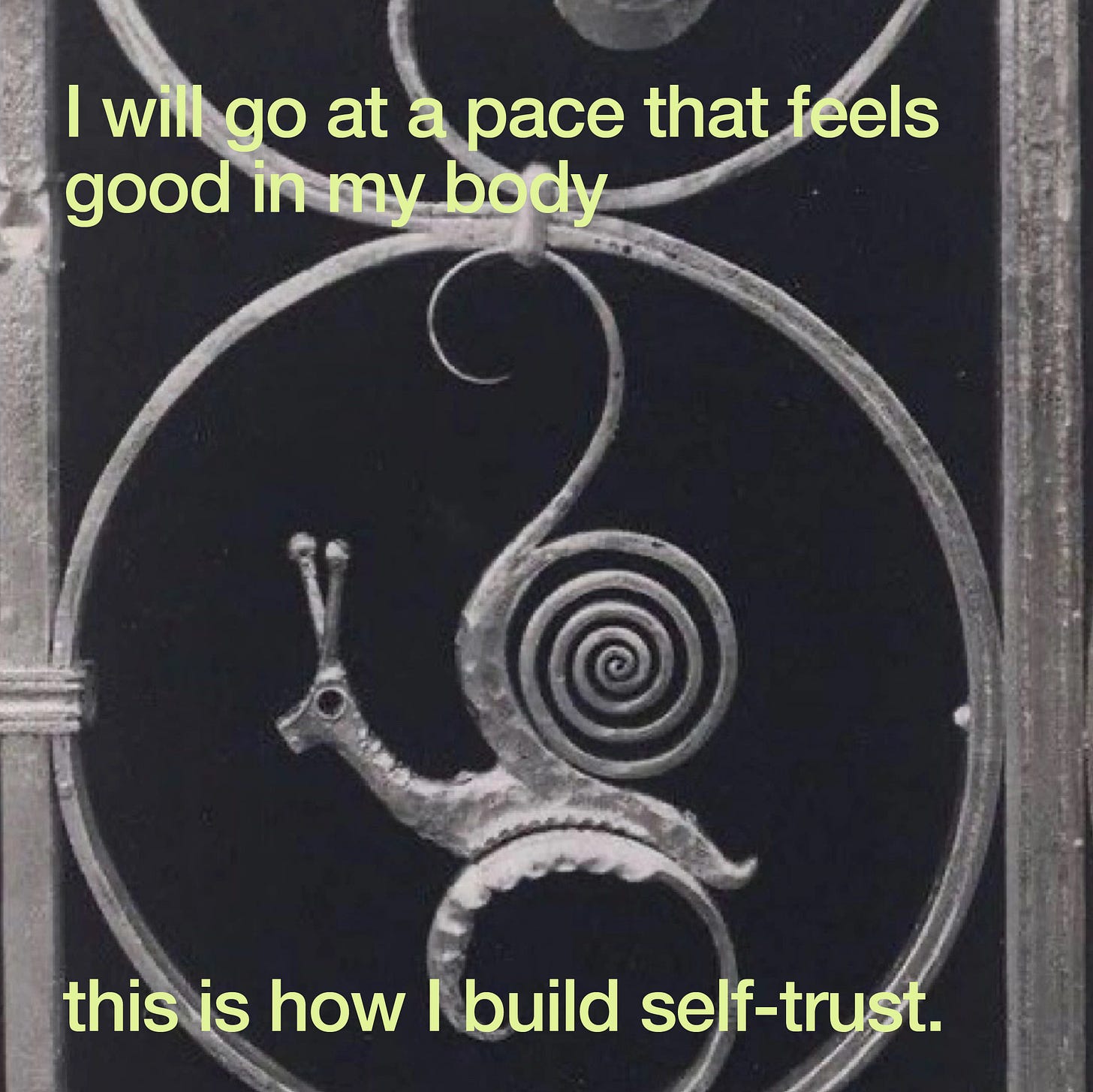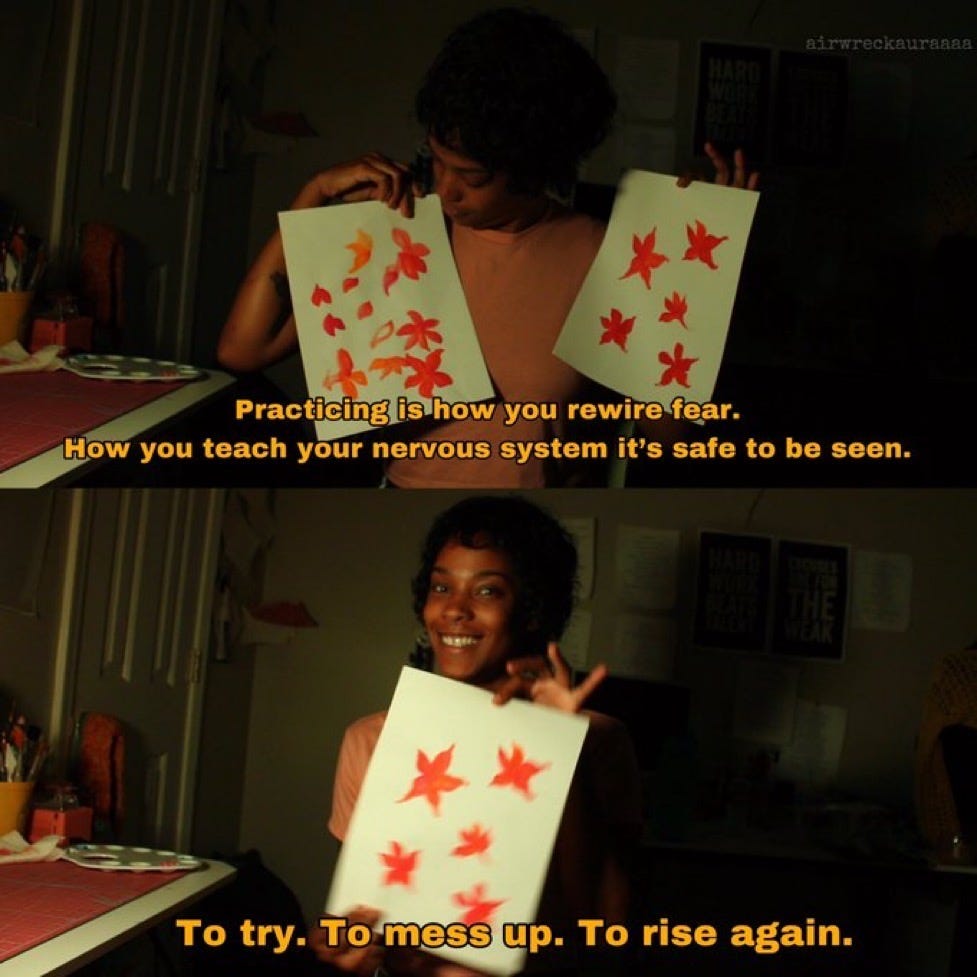The Connections Between A Creative Practice & Healing Trauma
Here’s what’s currently happening at the Moon Studio:
Clear Channels, our popular newsletter/creative expression course and challenge, begins in 3 weeks!
If you’ve been wanting to jumpstart your creative practice, start or restart a consistent newsletter for your business, September is the time to do so.
Not only will you receive direct, hands-on guidance from me for an entire month, but you’ll get exclusive access to additional workshops led by special guests like Jacqueline Suskin and other surprise luminaries. You’ll also have the support of a fantastic multi-hyphenate community. This is the only newsletter class for mystics, intuitives, spiritualists, and spiritually-adjacent folks! ;)
This is the only time this year we’ll be offering it. Sign up here.
On Moonbeaming, I discuss the difference between perfectionism and a commitment to excellence. It’s a must-listen for everyone wanting to kick the inner critic to the curb and instead, compassionately refine their craft. Tune in here.
The Moon Studio’s stone of the month is Carnelian, which helps you get your vitality back and become more action-oriented. Get out of your head, and off your phone—it’s making you mentally ill! Get back into your life; take action instead of ruminating. This red delight reminds you to be more in the world you want by creating it.
+++++++++++++
I’m writing you today from London, after hosting 3 beautiful gatherings with the coolest folks. It’s truly a blessing and an honor to connect with the realest, most compassionate and magical people!
This is also the end of Mercury retrograde, a transit I’m usually not interested in bad-mouthing…but wowza! Was this one a transit for the books! After experiencing what I call “a trauma flare” for the better part of the weekend, I went down a research rabbit hole and found some information that blew my mind. (Research rabbit holes are also very Mercury Rx coded.) What I found reaffirmed why a consistent, enjoyable creative practice can help heal a disorganized attachment style, also known as CPTSD.
My information comes from Harvard professor Dr. Daniel P. Brown, who did extensive work on trauma. Brown theorized that the condition commonly called CPTSD, or trauma, is actually a disorganized attachment style.
The reason why trauma therapy doesn’t always work, specifically talk trauma therapy, is that the disorganized attachment style is not being addressed. (One study I read posited that approximately 50% of people have disorganized attachment, a number that feels low to me, considering the traumatized and traumatizing state of the world.)
A secure attachment style must be created, a process that can take years, so that trauma therapy can be effective. A secure attachment is non-negotiable if you are a spiritual practitioner, mystic, creative, or want to expand in any way. A foundation of alchemy, spellwork, and ritual is the possession of a secure attachment to yourself, your helpers/guides, and life! If you don’t know, trust, or believe in yourself, that’s where you need to begin. If you don’t know how to soothe yourself or experience joy and pride in yourself, that’s where you begin. If you don’t, you’ll simply end up sabotaging your good fortune in some way, like dragging all your old patterns into a new situation.
By the way, if you were curious about why this year feels so personally WTF on top of all the collective WTF, it’s that we are being asked to address our inner landscape so that we can truly live and experience life in more expansive, fulfilling, and beautiful ways. The more you avoid it or shame yourself about it, the worse it will feel, and the longer you will feel worse. It also involves nervous system healing and brain retraining—no amount of mindset work or journaling can replace being able to locate safety in our bodies.
Here’s the part where creativity comes into the process. Listening to an interview Brown did before he died, he shared the different ways a secure attachment is formed between child and caretaker. One of them is called “express delight,” which is caretakers consistently expressing delight and joy in everything you do.
This is what builds healthy self-esteem, which is the link between positive emotions to self-representation. 1
How many of us had a childhood where our creativity was shut down?
It wasn’t good enough, it wasn’t a mark of productivity, it wouldn’t make our caretakers proud.
How many of us were told to be quiet, instead of celebrated for showing up in our natural exuberance?
Our dancing was silly, our playfulness was childish or embarrassing. We needed to be seen, not heard.
How many times were we made to feel ashamed of the joy and delight we found in our creative practices, our positive obsessions, our special interests?
Or, if you grew up anything like me, your innocent expression of happiness was squashed. Over time, I came to associate joy and happiness with fear. Some form of policing, punishment, rage, or humiliation would be unleashed on my genuine happiness, creative achievements, or simply a long stretch of well-being.
This is why a consistent practice of creativity that makes us feel proud of ourselves is so important.
Better yet, some form of practice that feels good, cathartic, and that brings us into secure attachment with reality.
That includes sharing our truths, passions, and process. Without shame. Without guilt. Without an inner critic, that negative voice/freeze state that is external policing, internalized, trying to protect from harm, albeit in a toxic fashion.
An accurate portrait of me talking to me, this month.
This is why I’m so insistent on having a newsletter with a consistent publishing schedule. Your newsletter/writing and creative practice should first and foremost be for you.
Write and create something you enjoy, that brings you pride and delight. Follow your passions, see where they lead. Figure out what fascinates you, and why.
(I teach you how to access your channel and voice, and organize it all
in Clear Channels.)
Even if I don’t always feel amazing when I’m creating, I’m always glad to have created.
Since I heard about Brown’s theory, I coupled my practice with some kind of expressed delight: either through a short dance party after I hit send, some kind of treat, or with a pep talk in the mirror.
A consistent, public creative practice is a way to show up for yourself by catching up to yourself. You’re checking in with where you are at, by way of your thoughts. Writing is a fantastic way to figure out what you think: for neurodivergent brains, it’s often the easiest way to hear our thoughts, out past the noisy chatter of our brains. This leads to clarification and the ability to observe our thoughts, also known as metacognition, another skill that Dr. Brown underscores is imperative to trauma healing.
The last bit of trauma healing connected to a more public creative practice?
It helps you connect to others. You find like-minded people, as they find you.
Eventually, you feel less alone, which is often a big reason artists create: to share what wants to emerge from deep inside, to express and explore their love and passion, and reach others.
If you are repressing yourself, you are abandoning yourself.
If you feel like you have things to say, but no one to share it with, get it on the page, into your notes app, or better yet, into an essay or newsletter on the internet. In the beginning, you don’t even have to tell anyone: you simply have to do it. In time, writing and sharing it becomes muscle memory.
The byproduct of a weekly publishing practice, or any practice, of course, is becoming better. Over time, it becomes easier for you to figure out what to write about. Easier for you to locate the truthiest part of the truth. Your voice becomes clearer, and so does your discernment. Your communication becomes more skillful. I credit never giving up on my writing and podcasting as being one of the decisions that helped me recover from massive brain trauma. To teach my destroyed cognitive function how to communicate skillfully again, I had to practice.
Worried about your brain rot? Create, don’t consume. Want to shift your state? Create. Want to expand your nervous system’s capacity? Share something with another person. And then another. And then do it again.
Here’s a simple way to begin:
Set a timer for twenty minutes. Write a short story that is 250 words long.
It can be about anything at all.
When the timer goes off, get up, and move your body. Shake, dance, take a short walk outside. Come back, set one more timer for twenty minutes.
Reread it, rewrite it, or edit your story.
When the timer goes off, do something to celebrate.
Do this for the next four days. Give yourself a couple days off, and reread your short stories. See if there’s something there to continue to work with or explore more deeply. Don’t forget to express delight with your practice.
If this resonated with you, sign up for Clear Channels. It will dramatically shift your practice, and ultimately, your life.
In the podcast I listened to, Brown quotes Jo Sandler here, from the Hampstead Clinic in London. This is one of five ways secure attachment is formed, according to Brown and Sandler.





This is so reveiling and makes so much sense since we develope our attachment style in childhood. Always shut down as a kid, and always been told to not stand out at all. And i still wonder why i struggle so much with starting and publishing anything that could put me on the spot 😅 Thank you!!
Wowwwww to everything you wrote about cptsd and disorganized attachment! It just respirates SO much!
Im seeing this for myself after going down some different Mercury rx rabbit holes this rx cycle… and the roots for me of WHY the cptsd (or perhaps more of the types of roots/context) and then rituals to heal, in addition to daily practice needs.
And wow.. you put so many words to what my guidance system has been saying for years and only this year I’ve been ready to listen to… consistent and daily spiritual practice.
Thank you!!